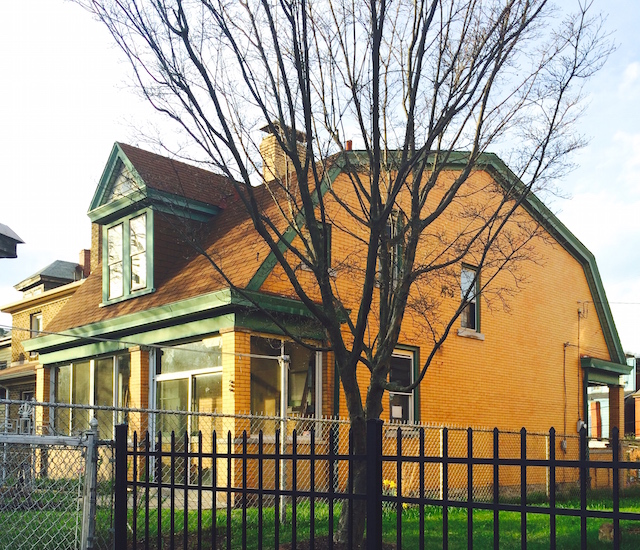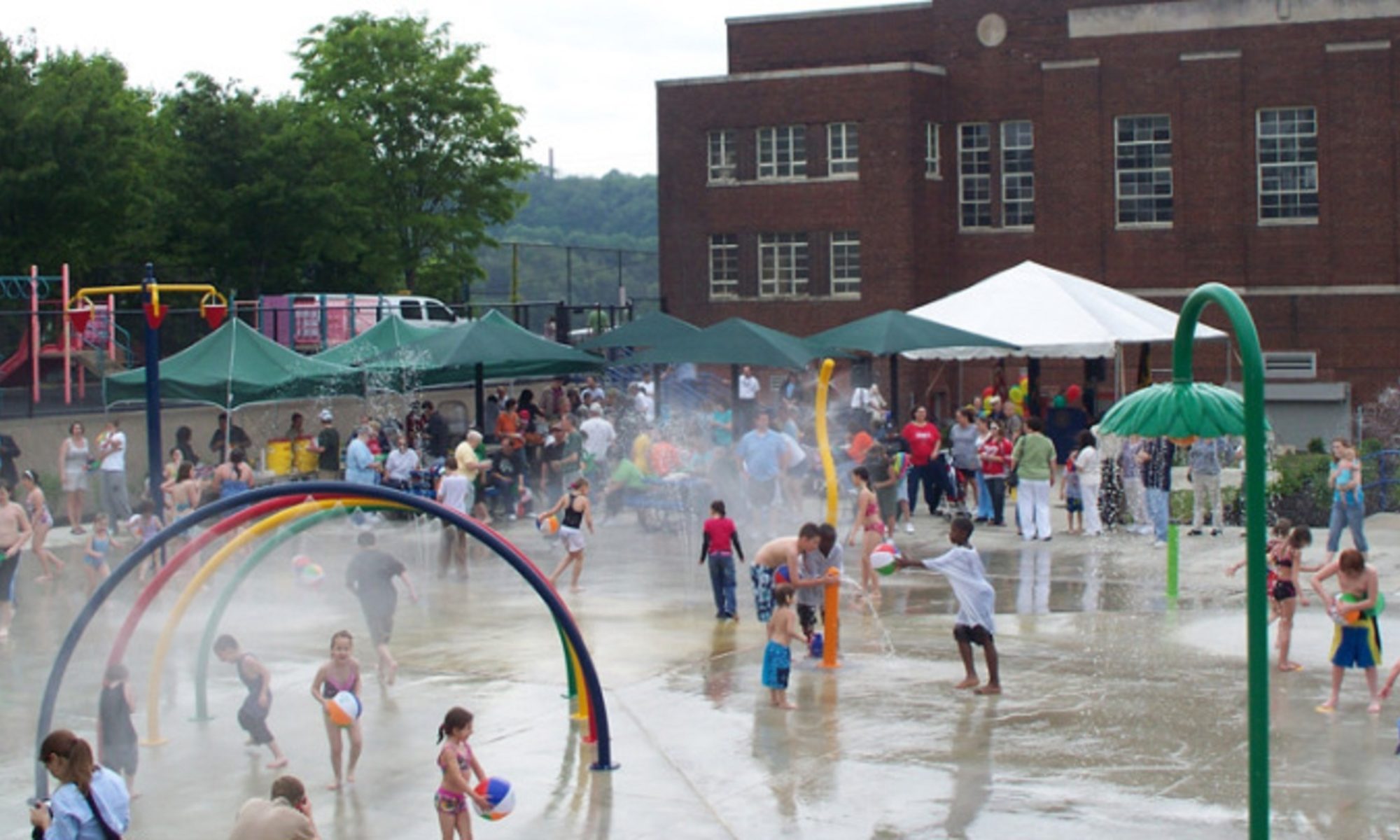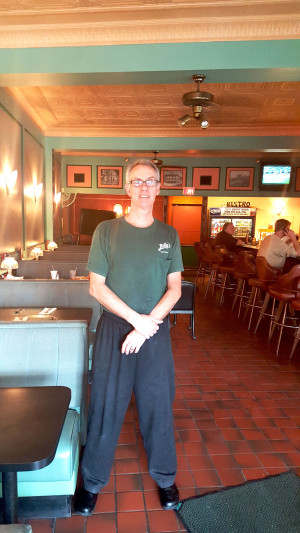Troy Hill Citizens General Meeting
Wednesday June 10th 7:PM – Held at: Most Holy Name School Hall – Tinsbury Street.
PennDot Senior Project Manager, Erik Porter is scheduled for
Attendance at this meeting to discuss the RT. 28 project, the upcoming East Ohio Street project, including any proposed changes of the traffic patterns, example: the 279 North on-ramp access from Concord Street.
This meeting is open to the public and all are encouraged to attend.
Library in the Park at Troy Hill Citizens Park, Starting Wednesday June 10, 2015
This summer, Troy Hill Citizens partners with the Carnegie Library to bring you: Library in the Park.
Wednesdays, June 10, 17 & 24 / 2-3:30 pm / Weather Permitting
Meet Carnegie Library of Pittsburgh librarians in the Troy Hill Park for outdoor activities. Enjoy crafts and games, reading and books, as the Library comes to your neighborhood! All ages welcome.
Love the Library in your Park? We hope to see you on Wednesday afternoons in July and August too!
Location: Claim @ Hatteras Street.
Inspired by the past – A new era for Billy’s Restaurant
Living or working in an inner city Pittsburgh neighborhood like Troy Hill, one comes to find that its people are as rich and rooted in history as the buildings around them. It is not uncommon to pass the same faces on a daily basis. Emerging from the THC office, I often find a familiar face to smile and wave to. We may or may not know each other’s names yet, but we recognize a friendly face, and wave or nod in neighborly acknowledgement. There’s something comforting about that. Warm interactions like these remind me of the community I grew up in—Morningside—where family homes are passed down from generation to generation, and close relatives buy homes a few blocks away. My sisters, neighbors, and many friends remain residents of their family homes.
As the community organizer and consultant for THC over the past year, I have come to know and love Troy Hill because of its people and places. I admire the bond they share. When I proudly mention that I work in Troy Hill, I always find someone who grew up here with fond memories of the neighborhood, or another who attended North Catholic, as my son did.
At moments like these, I take the opportunity to proudly re-introduce them to Troy Hill. Some haven’t returned to to visit the area in a long while, so I let them know that it is still the great place it always was. What is it about a hometown that can make time stand still and transform scenery into a living memory? It is a place where the past and present come face-to-face.
With the closing and re-opening of the only restaurant in Troy Hill, the past and present are doing just that—meeting each other face-to-face. Yet I am confident that they won’t butt heads. In order to gain some perspective on the merging of these two eras, I sat down with soon-to-be-former owner of Billy’s Bistro, Jim Bougher, and soon-to-be-new owner Don Mahaney last week. I was humbled by Bougher’s life-long work and exhilarated by Mahaney’s enthusiasm.
Jim Bougher is vested in the fabric of Troy Hill. His life is rooted in Billy’s Bistro. At the age of 18 Jim began working with his uncle, Bill Armstrong, doing what Bougher calls a “lot of heavy lifting”, more or less carrying heavy construction materials up and down the stairs. Armstrong, a “burly” man, as his nephew describes him, renovated the upper levels into apartment units, then combined the lower level into one contiguous property. A Troy Hill resident himself, Armstrong owned several other restaurants in the Pittsburgh area before establishing Billy’s in the late 1970’s. There was A & B Pizza, a small pizza shop in Troy Hill at the corner of Hatteras & Froman, as well as Frank’n Stein’s in Shaler township, which is still in business today.
When he purchased the property at 1720 Lowrie Street in 1998, Bougher also took legal ownership of the establishment from his uncle, who continued to help around the restaurant until his passing a few years ago. Like the other faithful members of Billy’s staff, Bougher’s mother Doris has also worked by his side for many years. When it came to his uncle’s work ethic, Bougher highlighted Armstrong’s commitment to craft—the wood paneling that spans most of the restaurant’s walls was done by Armstrong himself. Bougher took the time to point out to me one minor mistake where his uncle forgot to router a trim piece. Only one small mistake, unlike all the others, but so special.
During my visit to Brooklyn last week, I encountered something that reminded me of this piece of Billy’s history. While taking myself on a walking tour, photographing small retail stores and gathering ideas to bring home to Troy Hill, I stopped into “Icy Signs”, the artist-owned sign shop of designer Steve Powers. One particular sign stuck with me, reading, “Mistakes cost extra”. It is hard to keep in mind how the serendipity of mistakes makes them all the more endearing. Now, each time I go back to visit Billy’s Bistro, I will remember that error in the wooden trim piece. I will remember the day I interviewed Jim Bougher, and I will remember how I witnessed Jim feel his uncle’s presence as he described that ‘mistake’ to me. That day I made a memory to relive again and again throughout time.
Today, May 29th, 2015, Jim Bougher will have worked his last day at Billy’s Bistro. Bougher says he is “just ready for a change”. For many years, he has worked 7 days a week with few vacations. But this is certainly not a retirement. Jim will now have time to paint his mother Doris’s home. Maybe Jim will paint his own home, or take a vacation with his wife. After-all, he’s just taking a long deserved break. I took Jim’s photo at the end of our meeting, and I swear I saw his uncle and the bistro’s piano player in the background, or maybe it was just the atmosphere of pride bouncing off Jim’s chest. Congratulations Jim, and thank you for serving Pittsburgh with a family style restaurant and that Black Diamond Steak Dinner.
To pay homage to this staple of Troy Hill’s business community, visit Billy’s Bistro at 1720 Lowrie Street, Troy Hill
https://www.facebook.com/pages/Billys-Restaurant/116085791753233?
Written by Nancy Noszka, whom is also the consultant for Troy Hill Citizens, Inc.
Troy Hill Block Watch Meeting May 20, 7PM MHN School Hall
May’s Troy Hill Block Watch Meeting Wednesday, May 20, 2015 at 7 PM
Held at the Most Holy Name School Hall (Tinsbury Street)
This month’s guest speaker will be: Pittsburgh Police Zone 1 Commander, Lavonnie Bickerstaff
Please note – There will be no Blockwatch Meetings in June or July. We will determine if we need a meeting in August.
Most Holy Name Summer Festival 2015 Wednesday June 17 – Saturday June 20
Could the Next Brooklyn Be Pittsburgh? Nice Article about Pittsburgh, including Troy Hill
Could the Next Brooklyn Be Pittsburgh?
http://brooklynbased.com/blog/2015/04/24/move-pittsburgh/
When the borough you call home becomes known as one the most expensive places to live in America, it’s natural to look around for better alternatives. For a hot, Internet second, Buffalo—which recently made that list of cities that young college graduates are moving to—looked like a fine choice, so long as you enjoy brutal winters and more economic initiatives than jobs. But there is another metropolis the 25-34 cohort is gravitating toward that is considerably more buzzworthy, filled with James Beard Award-nominated chefs, tech startups, and the cool factor of a soon-to-open Ace Hotel. The city that holds all this promise? Pittsburgh. It claims more brainpower than Silicon Valley, based upon the number of its college-educated residents, and offers good jobs and a low cost of living for its young transplants. Think Portland, Oregon, except half the size, and with higher employment.
To find out how Pittsburgh stacks up as a second chapter for Brooklynites in search of greener pastures, I spoke to seven expats. If they all sound a little boosterish, it’s not a coincidence. Pittsburghers seem to have a hard time finding fault with their city, despite being landlocked and getting twice the amount of snow as New York City (on average). Nearly everyone I interviewed who has relocated there speaks about Steel City as if they were on the payroll of the city’s tourism board.
“For so many years, when you said Pittsburgh, the first image that popped in people’s heads was this gloomy, dreary, smog-filled city, and that’s not who we are anymore,” Alexis Tragos, 32, told me.
After working as the manager of patron services at the Whitney Museum for six years, the native Pittsburgher moved back there in 2011 with her husband, Bobby Stockard, 39, the ex-sous chef of Superfine in Dumbo. She is now working in external engagement and social responsibility at American Eagle Outfitters, which is based in the city. Stockard, meanwhile, has been cooking in the kitchens of some of Pittsburgh’s most popular restaurants, from Dinette to Legume, to currently a barbecue taqueria called Smoke, all while planning the launch of his own café and market.
“These restaurants are doing really amazing, creative, locally based work,” said Stockard. “It’s nice to be able to come to Pittsburgh and immerse myself in a community of cooks and chefs who care as much about food as the coastal chefs I’d known working in Brooklyn.”
Lowering their overhead has been another perk. “When we moved to Pittsburgh we got a row house that had three floors and a manicured backyard and a washer and dryer for $1200,” he said–six hundred less than he was paying for his one-bedroom in Vinegar Hill. The difference is a little more than what you’d expect given Pittsburgh’s cost of living index, which is just over half of Brooklyn’s–96.1 versus 169.3 (100 being the mean). When I asked two human resources professionals to weigh in on the reality of that figure, both concurred that the cost of living was more like 45% less than in New York, and that income calculators like Salary.com were pretty spot on in terms of predicting what you’d earn, and how far it would go. Tragos agreed. “The low cost of living here,” she said, “makes it feel like you’re taking home $10,000 to $20,000 more.”
Now they are rehabbing a three-bedroom, for which they paid—wait for it—$65,000, in a neighborhood called Troy Hill. It’s where they also plan to open up their cafe and market this fall, another venture that seems easier to pull off in Pittsburgh. Said Tragos, “While every city has its own bureaucratic red tape, in Pittsburgh I feel like you can actually get to know your building and health inspectors—because they’re just as committed to seeing the city flourish. Whereas in Brooklyn, you’d be just another ticket waiting to be served.”

The $65,000 Troy Hill three-bedroom home Alexis Tragos and Bobby Stockard are rehabbing. The photo, Tragos notes, “doesn’t show the stained glass windows, pocket doors, leaded glass door and four fireplaces.” Photo: Alexis Tragos
If you are ready to pack your bags now, wait. The couple does have some gripes about their new hometown.
“Public transportation is horrendous,” said Stockard, referring to the public bus system that provides the majority of mass transit. Given that ridership levels have been down four of the past five years, it seems Pittsburghers agree, though help in the form of a $52 million transit center, and a bike share service, slated to arrive at the end of the month, is on the way.
“You have to leave a half hour early to get where you need to be, just to be sure…You may even walk,” he said, half kidding.
After living in the 24/7 bubble of New York, Pittsburgh’s early closing hours also took some getting used to. “Things just aren’t open late,” Tragos complained. If you’re used to eating out at 8pm, or picking up your clothes after work, you may need to leave earlier, because the dry cleaner might be closed by six, and restaurants generally stop serving food by 9pm on weeknights, though that is changing.
“You just adjust your schedule,” she said. In exchange they get to enjoy a lifestyle they couldn’t have otherwise afforded. “To be able to move back and buy a house and have the potential to start a business in a couple of months, those were things we couldn’t do in Brooklyn.”
Room to Grow
This sense of opportunity and ease seems to pervade every conversation about what is happening in Pittsburgh right now.
“I feel like Pittsburgh is Brooklyn 10 to 12 years ago,” said Jeremy Waldrup, one of the few non-native Pittsburghers I spoke to. “There are still plenty of neighborhoods [where people can afford] to buy homes, to rent storefronts and really pursue their passions, and that’s something I think is increasingly harder to do in central Brooklyn.”
Waldrup and his wife were about to have their third kid, and had already begun searching for something larger than their Brooklyn Heights apartment when a headhunter called about a job in Pittsburgh. The city had never come up as an option before, but the more research he did, the more it intrigued him.
“Pittsburgh was formed with a similar hand as New York,” said Waldrup, who once worked under Mayor Bloomberg in the Department of Small Business Services and now heads the Pittsburgh Downtown Partnership. During the steel boom, which for a spell made Pittsburgh one of the wealthiest cities in the country, “Its buildings were built by many of the same people at the same time.”
Like New York, Pittsburgh is also surrounded by rivers and bridges, and has Brooklyn’s same, neighborhoody feel. In fact there are 90 neighborhoods total–more than Brooklyn–and a few are gentrifying at a fast clip. One writer in Ebony magazine lamented the changes, even as he admitted they had made his neighborhood of East Liberty, where the Ace Hotel is opening this summer, better. The Strip District is another up-and-comer, and the neighborhood almost universally compared to Williamsburg is Lawrenceville, for its association with artists and trendy restaurants, like Cure.
“There are folks who have lived in these neighborhoods for generations, so there’s an authenticity that’s similar to Brooklyn,” said Waldrup. But as a predominantly white city, it lacks the same kind of cultural richness. “I would have to say that I miss some of the vibrancy and energy that the diversity of the ethnic neighborhoods of New York City brings,” he said, echoing a complaint nearly everyone I spoke to expressed.
Waldrup and his wife now live in a neighborhood that sounds like a made-up idyll—Friendship—in a home he said he couldn’t afford if it were in Brooklyn, given its location and five-to-six bedroom size. When I asked how it was possible not to know how many bedrooms he had, he laughed. “We don’t use them all.”
Outings with the kids—something that requires a lot of stamina in Brooklyn—have become way easier, too.
“I remember going to my first Easter egg hunt in Brooklyn and there were 350 to 400 kids, and I was like, ‘Oh my god.’” Their first family-friendly event in Pittsburgh, by comparison, felt so empty, “We were like, ‘Are we here on the wrong day?’”
New Tech City
For someone in the business of helping cities grow and develop, Waldrup has arrived at the perfect moment in Pittsburgh, where the unemployment rate, 5.3%, is lower than the national average. All the steel magnates and manufacturers who used to power the city’s economy left a lot of family foundations in their wake, from the Heinz Endownment to R.K. Mellon; today the city claims one of the largest concentration of nonprofits in the country. Pittsburgh has also risen from the steel industry’s collapse through its huge growth in health care jobs, a thriving green economy, and a booming start-up scene, all largely fueled by the city’s greatest natural resource these days–the students coming out of the city’s universities like the University of Pittsburgh and Carnegie Mellon.
“There is no shortage of talent from an engineering side,” said Ron Bianchini, a born and bred Brooklynite who used to live next to what is now Kings Plaza Mall. The Carnegie Mellon alum spent seven years at the school as a computer engineering professor before starting companies like his latest endeavor, Avere Systems, whose file storage systems are used by Hollywood filmmakers to render scenes in blockbusters like Gravity and Zero Dark Thirty.
One of the main complaints he heard from students in exit interviews was, “‘I’d like for there to be more opportunities to stay.’” Now there are fewer and fewer reasons to leave. Google, which opened a satellite office here in 2006, now employs roughly 350 “Googlers”–a demographic many credit with bringing about Pittsburgh’s second act. Apple and Intel also have small outposts here, alongside startups like Duolingo and Bianchini’s own company. “We want developers,” he says. “We want programmers, but because we’re a startup, we don’t have time to train them.” Hiring local graduates means that they can “come in and contribute to the company immediately.”
There are other jobs that are harder to fill here. Bobby Fry, co-owner of Bar Marco, one of four local restaurants named as a James Beard Award semifinalist this year, and one that recently made headlines when it decided to give its entire staff a salary and forgo tipping, has discovered a shortage of cooks.
“Literally the best chefs are reaching out to chefs in other cities,” he said, trying to lure them to Pittsburgh, which Bon Appetit calls the next big food town. He estimates that a line cook in New York, who may earn around $30,000 a year, could easily make $10,000 more in Pittsburgh because of the demand for restaurant experience in a booming food scene.
Matthew Ciccone, who runs a popular co-working spot called The Beauty Shoppe, and whose small development firm, Edile, is one of the developers behind the new Ace Hotel, can recall that just three to four years ago, “One new restaurant would open and it was a big thing. Now I can’t even keep track of them…What’s happening here is exceeding my expectations,” he said, using Alexis Tragos and Bobby Stockard’s new venture in Troy Hill as a prime example. “I would have never thought it would happen there.”
The fact that Ciccone knew about this upcoming Troy Hill market, which will be called Pear and the Pickle–a nod to the area’s former pear farms and Heinz’s former pickling plant–could be chalked up to the fact that he’s a developer in the business of being tuned into market shifts. But it’s just as likely a case of news traveling fast in a small town. With a population of 305,842—one-eighth the size of Brooklyn–Pittsburgh is equal to roughly five Park Slopes. The greater metro area does boast an additional 2.4 million, but when you compare that to the 20 million people in suburbs circling New York City, the fraction remains the same.
A Place to Create
Without all those people, though, there is more wild space to roam. Adam Shuck, 28, who together with his partner decamped from Bushwick to Pittsburgh in 2010 in search of more time and affordable space to pursue creative projects (like his newsletter, Eat That, Read This), doesn’t mind that there “may be a couple more cloudy days in the year,” or that winter can be “long and awful” (an apt description of our winters, too). What makes it all worthwhile are the summers in Pittsburgh, which he finds much more bearable than New York’s “deadening concrete heat.” The city’s hilly topography yields a lot more breezy vistas, valleys, and creek hollows that are all a short bike or car ride away. “It’s really easy, wherever you are, to immerse yourself in nature,” he said.
Not living in a sea of millions has other advantages.
“One of the best things about Pittsburgh is that everything’s extremely accessible,” said Ryan Lammie, a 26-year-old artist who has created a collective for local artists in Lawrenceville called Radiant Hall, which rents affordable, rent-stabilized studio space to members for roughly $250 a month, in a setting that encourages networking and holds regular group shows.
“You go to a few events, and people start to recognize you, and it’s fairly simple to create a place in the community for yourself.” Becoming familiar with the directors of the city’s major art institutions, the Warhol Museum and the Mattress Factory, for instance, is not as out of reach as it would be in Brooklyn.
Lammie grew up in a nearby suburb called Gibsonia and returned to Pittsburgh after getting his B.F.A. from Pratt, and completing an arts residency at Yale, so he has experienced the art world outside of Pittsburgh, and recognizes that an artist would need to market their work in other cities as well in order to thrive. Still, he says, “Pittsburgh is one of the most supportive arts communities I’ve been a part of. It’s a perfect home base for artists to settle in–a place where artists can try things out, experiment and improve their work.”
The tradeoff? “It’s very easy to burn a bridge,” cautions Lammie. “It’s a smaller town where things can spread pretty quickly, and you have to be careful that you’re always professional.”

Bobby Stockard and Alexis Tragos in their new hometown. Photo: Libby Hilf Photography
Where Everybody Knows Your Name
Size, it seems, is Pittsburgh’s double-edged sword. “We still need more humans,” said Matthew Ciccone. “There are not enough humans…The more people you have, the more vibrant a place can be.” He does sense things changing, though, noting that in the past, almost everyone he met who had recently arrived in Pittsburgh had actually grown up in the city or its suburbs, and had “boomeranged” back. Now he’s starting to meet more people who aren’t natives.
Bethany Tucke, a 37-year-old boomerang herself who recently moved back to Pittsburgh after a dozen years in New York, has noticed that the dating pool has grown thanks to local university grads staying in town after school, and the transplants that region’s “Eds, Meds and Tech” industries are attracting.
“I think the dating scene is picking up,” she said. “If you went to Tender–a popular cocktail bar–one night, “and threw a velcro ball around, you’d hit more people in couples or out on a date.”
And unlike the men in Brooklyn, said Tucke, “The guys in Pittsburgh are a bit more family-oriented, a bit more ready to meet somebody and not quite as into serial dating.” This is one person’s generalization, but the Pew Research Center did recently rank Pittsburgh one of the top 10 cities for women looking to marry an eligible (i.e., employed) bachelor. Though Tucke thinks the options for women start to dwindle outside of the early 20s-30s sweet spot.
“Most people my age either stayed in Pittsburgh after school and are celebrating their 15-year anniversaries or have moved back after coupling up, ready to settle down to start or grow their families,” she said.
Adam Shuck, the Bushwick transplant, senses that the queer community is growing too, thanks to the new transplants, though he still sees many of the same faces at popular parties like Honcho or Hot Mass. And while he arrived in Pittsburgh already coupled up, he said, “I hear frustrations from single gay friends about the dating scene, but it doesn’t strike me as particular to Pittsburgh. Yes, it’s smaller but it doesn’t seem any different than the dating foibles I experienced in Brooklyn.”
Unless, of course, a relationship sours. Alicia Kachmar, who used to live in Brooklyn (and write for Brooklyn Based), moved back to her hometown between 2010 and 2014, and experienced what was life was like in a small city, post-break up. “If you have a boyfriend that you break up with,” she said, it’s hard to hide from him because “there’s only like three bars that your circle of friends go to… You will run into people almost every day that you know.”
This is a high point of the city as well, she said, especially during the summer, when food fairs like the Pierogi festival and the Three Rivers Arts Festival are held. The latter, coming up this June, takes place over 10 days and features acts like Neko Case, Jenny Lewis, The Felice Brothers and Milo Greene–all for free. That’s a pretty good lineup, at a very good price. As long as you’re OK with bumping into someone.
| B |
Lookout Garden Workshop, Thursday April 23, 7:00PM
April’s Troy Hill Block Watch – 4/15/20 @ 7PM – MHN School Hall
Troy Hill April Block Watch Meeting
Wednesday April 15 @ 7:PM
Most Holy Name School Hall – Tinsbury St
There is a Blockwatch Meeting on Wednesday April 15, 2015 at 7 PM Most Holy Name School Hall.
This month’s guest speaker will be a Community Relations Officer from Zone 1.
Troy Hill Community Clean Up Day, Saturday April 25th
Troy Hill Citizens 2015 Meeting Calendar
Also can navigate to 2015 Meeting Calendar from THC Home Page click on tab on top of page marked CALENDAR
http://troyhillpittsburgh.com/calendar/









